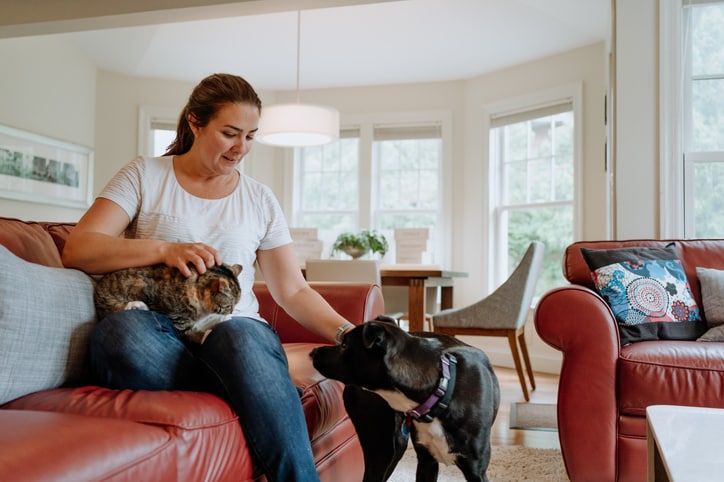You have a new puppy. Maybe you adopted your little buddy or your dog gave birth. Either way, you have a fluffy little bundle of fur to feed (and feed properly). A puppy feeding schedule helps.
Just like human babies, how you feed your dog will have long-lasting consequences. “The feeding habits started as puppies will likely linger far into adulthood,” says Dr. Jennifer Koehl, veterinarian and writer of VMDiva. It is important to choose the type of food you want to feed your dog, whether it is dry canned or fresh.
It is also vital to start out with a feeding schedule. “Dogs thrive on predictability,” says Dr. Chris Bern, veterinarian and writer of A Vet’s Guide to Life. But it can’t be set in stone from day one. Like your puppy, the feeding schedule will grow.
Birth to 6 Weeks
The best food for newborn puppies is their mother’s milk. Be sure to start the mother on puppy food. “Not only does this give the mother extra nutrition,” says Dr. Bern. “But as the puppies begin to practice eating, they will sample their mother’s food, making transitioning to puppy food easier.”
If the mother is not around, feeding a newborn puppy becomes dicier. Several dog milk substitutes are available, so consult your veterinarian about the best options. At birth, puppies need to be fed every two hours. “Not only do they need constant feeding,” Dr. Bern warns. “But they also need help going to the bathroom.” The mother dog will lick each puppy’s genital region to stimulate the elimination. “People will need to use a warm washcloth to rub the puppy’s anal area to help it go to the bathroom,” Dr. Bern says.
6 Weeks to 4 Months
By six weeks, your puppy should be fully weaned and eating puppy food. At this age, your puppy feeding schedule should involve feedings two to four times a day, depending on the breed. Small breed puppies, like Yorkshire terriers, are prone to hypoglycemia and should have more food available during the first weeks. But don’t leave food out forever — it’s important to set meal times to help with housebreaking.
“Dogs will have colon contractions about 20 to 30 minutes after they eat,” Dr. Bern says. This gives you both the opportunity to make sure that he is outside. Refer to your puppy food for the correct amount of food for your dog’s breed or size. “The amount on the package will be the total amount your puppy should eat each day,” Dr. Bern advises. “Split that total amount into the number of feedings you are giving your dog.” For example, if you should give your puppy one cup of food and you have two feedings a day, you should measure out one half cup of food for each feeding.
4 to 8 Months
Your puppy is growing. In addition to more food, he should be able to go longer without eating. It’s also time to make sure that your puppy learns good mealtime manners. Never feed your dog from the table. “If your puppy begs for food, do not feel bad removing him from the dining area during mealtimes,” assures Dr. Koehl. It’s also important to teach your puppy how to eat. “Make sure that he sits and stays before you put his bowl down,” advises Dr. Bern. “Food motivation makes training easier.”
8 Months to 1 Year
During the final months of puppyhood, your dog should be down to an adult feeding schedule — one to two times a day. By the time your dog is a year old, she is ready for adult food. To make the change, start by adding a small amount of adult food to your puppy’s meal. Add more adult food every day as you cut the amount of puppy food until you are feeding only adult chow. Again, follow package instructions to determine how much to feed your pup.
When to Worry
Your puppy should be bright eyed, active and eager to eat. If your pet ever appears listless or refuses to eat, seek a veterinarian immediately, as a feeding adjustment may be necessary.
Have a new pup to name? Check out 51 Unique Dog Names!
Shellie Braeuner, is an award-winning children’s author. She earned an M.Ed from Vanderbilt in Human Developmental Counseling and has worked as a nanny for more than 25 years


